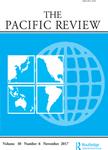版权所有:内蒙古大学图书馆 技术提供:维普资讯• 智图
内蒙古自治区呼和浩特市赛罕区大学西街235号 邮编: 010021

作者机构:Int Univ Japan Inst Res Grad Sch Int Relat Niigata 94972 Japan
出 版 物:《PACIFIC REVIEW》 (Pac. Rev.)
年 卷 期:1998年第11卷第2期
页 面:290-305页
核心收录:
学科分类:0302[法学-政治学] 03[法学] 030206[法学-国际政治] 0705[理学-地理学]
主 题:ASEAN Thailand Myanmar constructive engagement regional cooperation border conflict
摘 要:Thailand has pursued a policy of constructive engagement towards Myanmar since Chatichai Chunawan s government, which was in office from August 1988 until February 1991. While the international community has condemned Myanmar s military leadership for human rights violations Thailand has promoted closer relations with the ruling regime in Myanmar, or the State Law and Order Restoration Council (SLORC) utilizing the idea of constructive engagement as a justification. Chatichai gave expression to this policy of closer relations with Myanmar when he outlined a vision of Thailand as an economic centre on mainland Southeast Asia, which would embrace neighbours Laos and Cambodia as well as Myanmar. The term constructive engagement was used subsequently to characterize this policy when it came under international criticism. According to successive Thai governments the benefits of constructive engagement included enhanced border security and increased trade since, as it was argued, Thailand could not afford to coexist with a hostile neighbour. This policy, however, has reached its limits as the costs are likely to outweigh the benefits in a way that will be explored in this article.